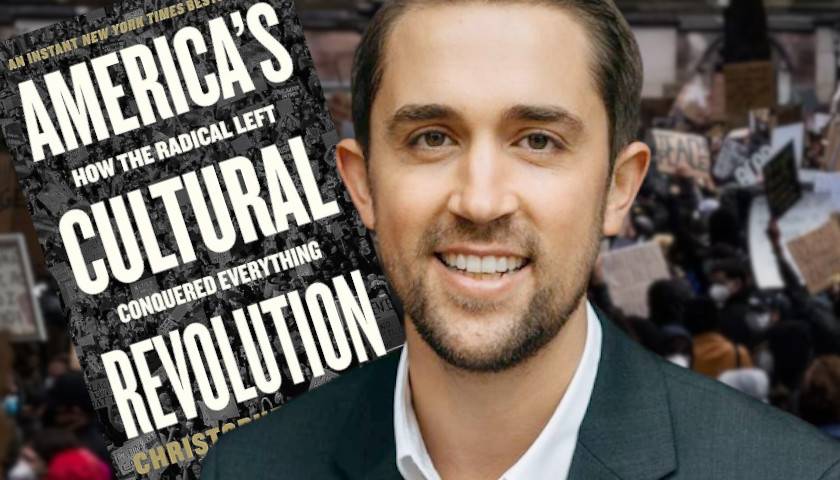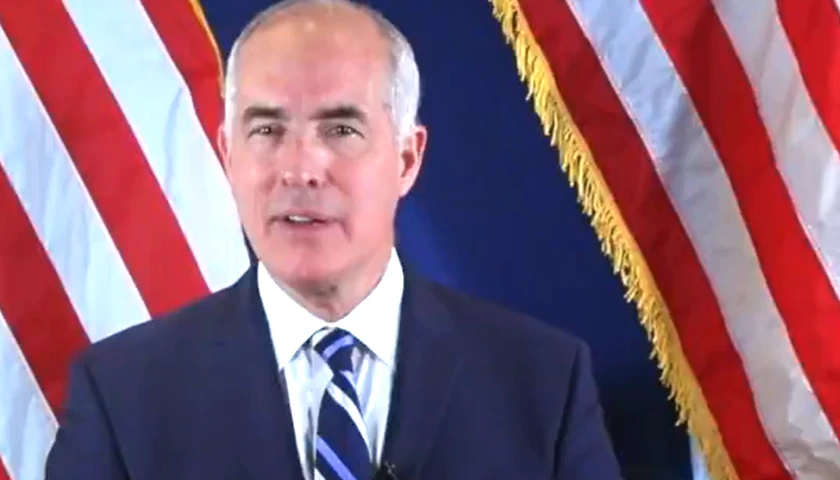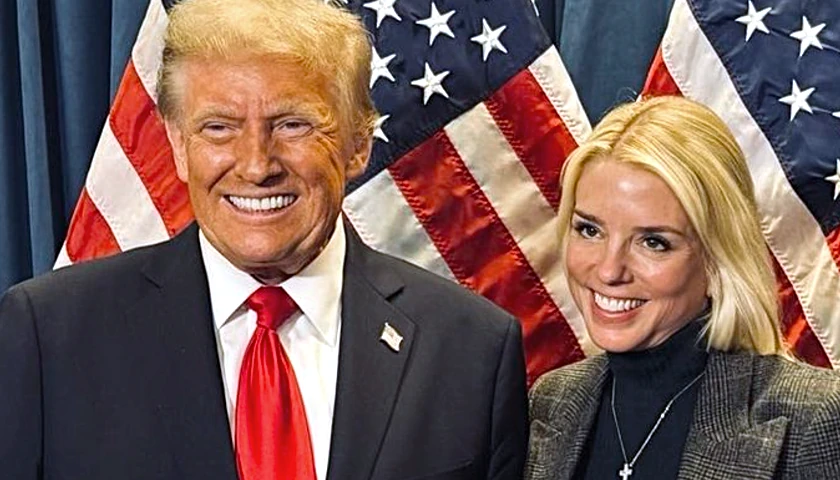by Paul Gottfried
Christopher F. Rufo’s America’s Cultural Revolution is a landmark study of America’s radicalization since the 1960s. It is a carefully constructed work full of insights, which confirmed for me the conclusions that I had reached while studying some of the same topics. Rufo shows convincingly that certain radical thinkers, most of whom were American born, affected deeply and perhaps irreversibly American institutions starting in the 1960s. This study clearly avoids an interpretive perspective that I have repeatedly mocked, exemplified by those who pretend that American culture and politics were generally sound up until quite recently, perhaps until the point when LGBT enthusiasts turned from gay marriage to gender transitioning.
Among the main architects of Rufo’s metamorphosed America were “the father of the revolution” Herbert Marcuse, Marcuse’s last wife, Erica Sherover-Marcuse, a radical feminist and censorship enthusiast, Marcuse’s black nationalist-Communist student Angela Davis, Portuguese revolutionary educator, Paul Freire, and black legal theorist and Harvard professor Derrick Bell. The influence of these figures, according to Rufo (pictured above), can only be fully grasped by looking at those later luminaries whom they trained in their ideas. Equally critical from my perspective is the alacrity with which corporate capitalists ran to submit to the new order.
Rufo is certainly not assigning extravagant importance to those in his rogues’ gallery. He builds his case by citing the revolutionary statements of his subjects and by examining their powerful contacts in the American academy and among public administrators. Particularly striking is how readily government administration and elite institutions yielded to Rufo’s subjects and how easily they could train succeeding generations to take their place. When Patrisse Cullors, founder of BLM, praised Angela Davis as her teacher in the “Black struggle,” she did so in the Harvard Law Review. Cullors’s thinking was molded by Derrick Bell, another black nationalist and socialist radical, who graced the Harvard law faculty for decades. Bell, not incidentally, laid the foundations for DEI, an antimale and antiwhite policy that white male executives at Lockheed Martin helped pioneer.
“Educational philosopher” Paul Freire managed to guide the thinking of every major department of education in the country, starting with Harvard. Although none of Freire’s educational theories seems to have had any effect in improving the quality of American education, they did encourage a crusade against “whiteness” and capitalism. One of Freire’s “crucial relationships” was with the American radical educationist Jonathan Kozol, whose appearance at the small college where I taught generated, particularly in the education department, rapturous excitement.
Our college administration displayed equal enthusiasm when we were granted a visit by the “prison reformer,” Angela Davis. Since the college paid $10,000 for Angela’s homily, on which thunderous applause was then lavished, her presence on campus clearly meant something significant for the academic bureaucrats who invited her. My fellow-Marcuse student was, as she was introduced, a “prison reformer,” loosely understood, as Rufo explains. In August 1970 she collaborated in an attempted escape by her lover George Jackson, who was being tried in the Marin County Hall of Justice. At that time Angela furnished guns for those involved in the escape. Her “act of liberation,” as she described it, resulted in murder, threats on the presiding judge, and the taking of hostages. Davis was apprehended as an accomplice, but wealthy radicals came forth to pay her legal bills. A jury acquitted her, and she subsequently became an academic superstar, who began her victory lap by embarking on a world tour. As Rufo tells it: “She spoke to adoring crowds in Los Angeles, Chicago, Detroit, and New York and then traveled throughout the Soviet Union with stops in Russia, Central Asia, Bulgaria, Czechoslovakia, Cuba, and Chile.”
Since Davis adored Communist regimes, which she regarded as antiracist, it is not surprising that her hosts rolled out the carpet for this admiring American radical. During her visits to Communist countries, she raged against those whom the Communists imprisoned and tortured. Presumably Communist victims were all racists and fascists. More surprising is the drooling adulation that Davis enjoyed on American campuses and among our progressive intellectuals. Although Rufo is correct that the woke Left’s march through the institutions started with Marcuse and with such germinal tracts of his as Critique of Pure Tolerance and An Essay in Liberation, it is also the case that Marcuse’s radical activism started late in his life, sometime between the mid-1960s and his death in 1979. This German émigré, who began his career as a serious interpreter of Heidegger and Hegel, never enjoyed the decades of adulation or the cascading honoraria that devolved on his more criminal, less erudite student and on those other celebrities treated in Rufo’s work.
What struck me as a contemporary of the events Rufo describes is the worshipful treatment accorded to his subjects over many decades. Rufo is spot on about the long process by which the cultural radicalism that he explores became incorporated into our public consciousness. Such trends did not start yesterday, and even for someone, like me, who lived through these cultural and political changes, the extent of the revolution that Rufo depicts still seems astounding or dismaying.
A question to which I keep returning in my own studies, and one that Rufo shows is worth asking, is why the US was so susceptible to what his book reveals. Why did universities, shapers of popular culture and government administrators support radicalizing changes for many decades? Why did the affluent, including corporate executives, become intoxicated with cultural revolution, a trend that as Rufo documents hardly started with the death of George Floyd? We are now seeing a continuation of what the late Tom Wolfe in the early 1970s mocked as “radical chic.” White self-hate, and invectives against the “pig police” have now become fused with campaigns against gender distinctions, and the censoring of the unprogressive.
What, it might be reasonable to ask, made the earlier years of the Left’s takeover different from our own more advanced state of delusion? Several factors may have held back the full impact of these developments for a generation or more. Major political parties, particularly the Democrats, were still well to the right of where they are now in their stands on social questions. In the 1960s the Democratic Party moved quite cautiously on the abortion question lest it offend its blue collar Catholic and Southern Protestant base. Fifty years ago, there was also a solid, demonstrative opposition to the Left, which even included traditional Democratic constituencies. The Right still felt free to act out its irritation, for example, when the hardhats struck back at antiwar protesters in urban centers. This happened long before the Left came to control our surveillance state and military. In the 1960s, the Right was still in a position to assert itself quite forcefully.
Moreover, universities and the media in the early years of the Left’s march through our institutions were not as radicalized as they are now. They were mostly ‘liberal Democratic” by the standards of an earlier age, not by those of the Biden presidency. Equally significant, the major interest of the academic Left in the 1960s and 1970s, if memory serves, was not intersectional politics but excusing and sometimes glorifying Communist regimes, while attacking American Anti-Communists. The Vietnam War gave respectability to those trends but hardly initiated them. Although the civil rights movement developed a strident, violent radical wing in the 1960s, something that Rufo details for us, that wing did not enjoy anything approaching the social acceptability now claimed by BLM. After the death of George Floyd, 67% of Americans, according to a Pew Poll, supported this black nationalist movement which has never hidden its antiwhite and anti-American character and hardly eschews violence. In June 2023, support for BLM was still as high as 51%, despite continuing revelations about the corruptness of the movement’s leadership.
Pointing out that radical fashions and opinions have become more extreme and more socially acceptable since the 1960s does not at all clash with Rufo’s findings. He is filling in the background of an incremental revolution, the effects of which are now impacting our social, political, and cultural existence. It might be objected that Rufo is writing primarily a history of ideas and that other factors beside ideology created our woke world. I myself have published a book on the modern administrative state as the key player in the cultural and social transformation that we are experiencing, and Christopher Caldwell and Michael Rectenwald more recently have advanced related arguments. Others have stressed judicial activism as a critical factor in mandating social engineering of a kind that has transformed American society. These explanations, however, are not mutually exclusive; and Rufo’s work can be said to complement other interpretations.
Those who are observing with growing dismay what is transpiring in this country and throughout the West are seeking a more complete picture of how, in Rufo’s words, “the radical Left conquered everything.” The reasons are multifaceted, but Rufo’s book is a good place to start one’s investigation.
– – –
Paul Gottfried is a contributor to American Greatness.
Photo “Christopher Rufo” by Christopher Rufo. Photo “America’s Cultural Revolution: How the Radical Left Conquered” by Amazon.




